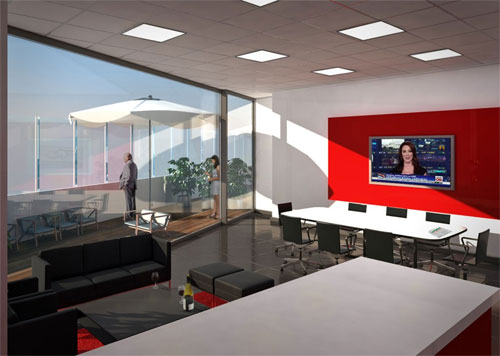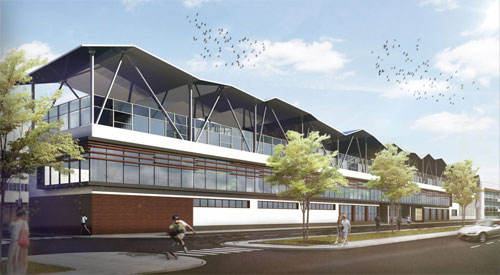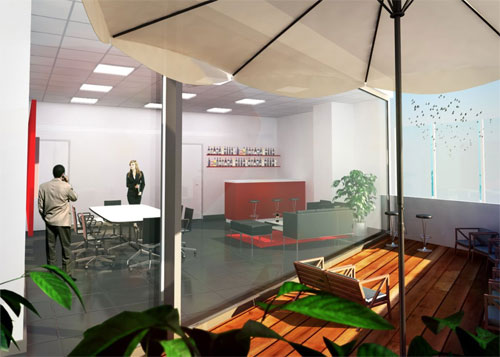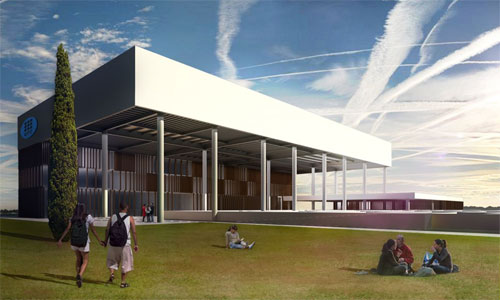Interview with Ricardo Botella, the promising architect and 3d visualizer, regarding the importance of 3D architectural visualization & rendering
Interviewer : Rajib Dey (Editor-in-chief)
I'm an architect specialized in 3D visualization. I'm founder of render online, a company focused on quality visualizations for architectural projects and real estate. We also research in new technologies applied to visualization and project development, like 3D printing and augmented reality.
I studied architecture as my personal passion, however I always loved computers and new technology, and during my studying I became more and more interested in computer graphics, the way I could better mix my skills. It was a hobby at first, a way to make my degree projects look better and more realistic.
I believed in entrepreneurship in architecture, and from my point of view that needs to be done by involving ourselves in virtual world and new technologies. When I started, everything was about getting the more realistic images we could. Then, when technology let us reach the limit, visualizers started to think in hyper-realism and more artistic ways of representation. I think now the challenge is the expression, it doesn't need to be as real world, the challenge is to be art.
I started using Sketchup for representing my projects in the first years I was studying. I remember the first version. It was free, easy to use, and quick. I could have a 2D project made in 3D in a few hours before having it ready for the teachers review. The first time I did that was amazing.
Sketchup is an amazing tool for designers and visualizers, after years of CAD, sketchup remembered designers the paper and pencil, a quick way to design thinking. Fast do and undo, easy exporting, and with a great community hub that lets you upload and download thousands of designs in a while.

Image Courtesy: render-online.net
I like architectural projects that make me feel they really can be built in our world (or other worlds). The render I like more wasn't successful in business, it was a personal project for a train station, made with millions of polygons with a 2-core laptop, I was learning a lot of new tricks, it was hard but made me feel I could do a lot more with just a bit better machines.
We are collaborating with specialists in augmented reality to make new ways of visualization for real estate businesses, a way to people understand far better buildings in 3D in real time.

Image Courtesy: render-online.net
The hardest thing is to get clients, and when you have them, it's making them understand the difficulty of a 3D designer job, many people believe that "everything" is made by computers, and that it's made immediately. The truth is that computers and software are amazing tools, but just tools. The talent is ours.
I think the key is organization. Whether you make a complete job alone or in teams, it's very important the first planning hour for final success. Making every step right, and saving different versions for changing demands, which are the common thing to happen.
As I mentioned before, I believe the future now is augmented reality. Glasses, or lenses, or whatever other gadget we are to see in the next 2 to 10 years will be as popular as tablets and smartphones are today. And again will change the way people see their surroundings. Architectural visualization has to be there.
That's a long discussion many CG artists have. I think we can already make them identical, but I personally don't see the point. For me it is far more interesting the propositional views as artists we can make.

Image Courtesy: render-online.net
There are a lot of ways for that, probably each CG artist will tell you different methods. I usually try to make very good and complete models, and try to push the result up in post processing. But it's not always needed to be superior to finished building, in many occasions clients just want a simple drawing representation which lets them imagine a lot more about spaces.
I use to use 3Ds max, vray, rhino, photoshop. It depends on the project, how every software manages different shapes and textures. For fast work, easy shapes, many changes, it's sketchup. A lot of weird surfaces rhino is great. Photoshop is the king on post processing with a lot of tools, but many times a lighter software can make the deal when images don't need many changes after rendered.
We are working on a project for representing many different 3Ds as fast and with as much polygons with just one marker, making sellers an easy job with a technology that's not completely developed to its limits yet. It's easy to start experimenting with augmented reality, it's harder to make a big project with it nowadays, but we'll make it.
We have great tools to make whatever our imagination wants to create. Expertise in CG software takes its time, but it's very important to never lose the creativity, making paper drawings sometimes, writing down your own ideas, etc. will make the difference in the future.

Image Courtesy: render-online.net
sketchup-ur-space is a great place to stay up to date with sketchup and all its possibilities, and also with the evolution of 3D modeling and visualization. I appreciate this interview, and I like the magazine being open to many professionals and artists to collaborate sharing their experience. Thank you very much and congratulations!
- Cover Story
-
 SketchUp Can Help You Win Interior..
SketchUp Can Help You Win Interior.. -
 Best Laptops for SketchUp
Best Laptops for SketchUp -
 How to Resize Textures and Materials..
How to Resize Textures and Materials.. -
 Discovering SketchUp 2020
Discovering SketchUp 2020 -
 Line Rendering with SketchUp and VRay
Line Rendering with SketchUp and VRay -
 Pushing The Boundary with architectural
Pushing The Boundary with architectural -
 Trimble Visiting Professionals Program
Trimble Visiting Professionals Program -
 Diagonal Tile Planning in SketchUp
Diagonal Tile Planning in SketchUp -
 Highlights of some amazing 3D Printed
Highlights of some amazing 3D Printed -
 Review of a new SketchUp Guide
Review of a new SketchUp Guide
- Sketchup Resources
-
 SKP for iphone/ipad
SKP for iphone/ipad -
 SKP for terrain modeling
SKP for terrain modeling -
 Pool Water In Vray Sketchup
Pool Water In Vray Sketchup -
 Rendering Optimization In Vray Sketchup
Rendering Optimization In Vray Sketchup -
 Background Modification In sketchup
Background Modification In sketchup -
 Grass Making with sketchup fur plugin
Grass Making with sketchup fur plugin -
 Landscape designing in Sketchup
Landscape designing in Sketchup -
 Apply styles with sketchup
Apply styles with sketchup -
 Bedroom Making with sketchup
Bedroom Making with sketchup -
 Review of Rendering Software
Review of Rendering Software -
 Enhancing rendering for 3d modeling
Enhancing rendering for 3d modeling -
 The combination of sketchup
The combination of sketchup -
 Exterior Night Scene rendering with vray
Exterior Night Scene rendering with vray





